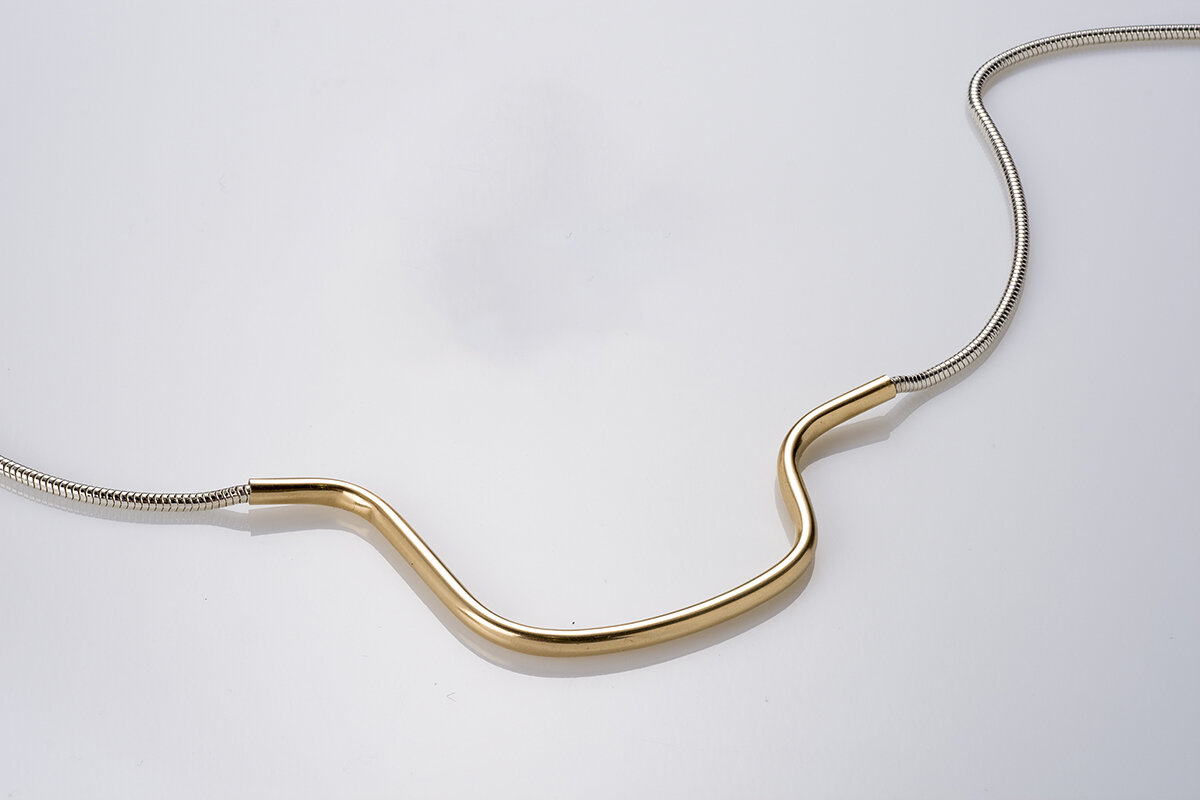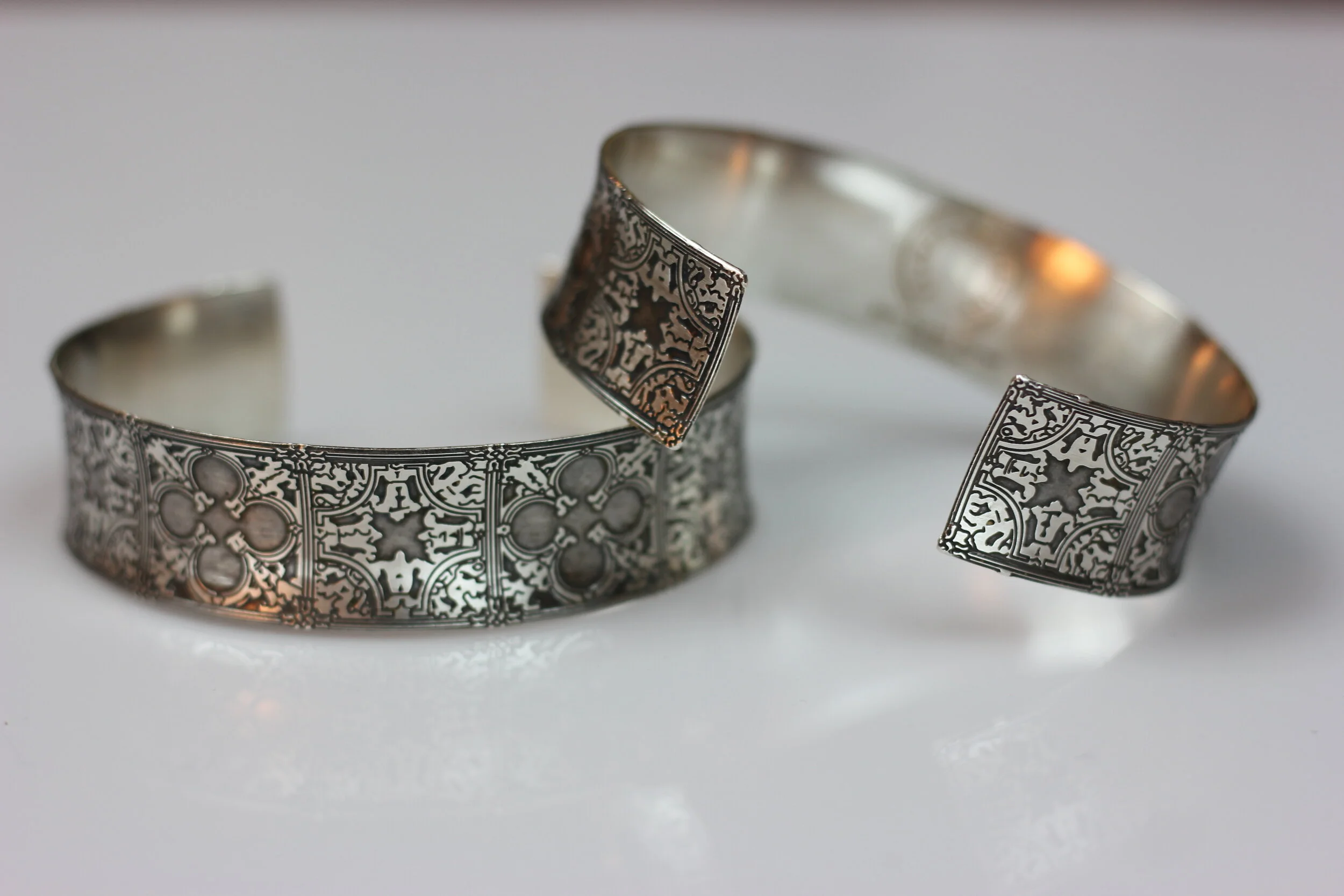Hailing from New Orleans, I am inspired by the urban environment around me, the various states of its metamorphosis and decay, and its relationship with the ever-evolving natural landscape.
My artistry is inspired by architectural details such as decorative wrought iron and plasterwork, as well as historic maps and imagery and make permanent an ephemeral aspect of our cities’ histories.
My adornment captures the transitory landscapes of history: from trade routes and forgotten swamps to abandoned asylums whose architectural residue still decorates the landscape today.
Jewelry inspired by cities, compelled by nature
From raw sheets of metal, my work transforms into wearable archives through a handcrafted process that involves heat image transfers, various etchants, soldering, patinas and polishes, and hammer forming. The process and the final product aspire to create civic dialogue about an embedded history, and the ebbs and flows of social and physical community infrastructure.
Ultimately, my work blurs the lines between the past and the present weaving the poetics of place with the fabric of time.
I currently maintain studio spaces in Washington, DC, New Orleans, and a shop in Alexandria, Virginia.
Behind the Scenes
Archival map from the Library of Congress
Hammering rivets to connect metal
Acid etching
Handsawing jewelry components
Meandering Mississippi River Cuff during patination
Hammering cuff
Ink overlay on metal for etching
Handpainted patinas
Handsawing metal
Interview: Inspiration for Architectural Collection
The etching process.
This quick video shows an abbreviated version of the etching process.
I perform research at the Library of Congress to obtain the images, and then I clean up the map or image digitally as many are hundreds of years old.
The image is printed out on transfer paper using laser jet ink, which acts as a resist or mask to the dissolving of acid.
Applying heat and pressure, the ink dissolves onto the metal sheet. Various salts and acids are used to etch, creating the relief you see and feel. Then the piece is neutralized using baking soda, and the ink resist is cleaned off with acetone.
The piece is then ready for several layers of handpainted patinas which darken the recesses of the piece. Then, the piece is cut, sanded, and filed before hammer-formed.
Finally, the piece is polished to a shine.
Follow my journey.

Inspired by cities and their relationship with the ever-evolving natural landscape around us.
Newsletter
Be the first to know about my new collection launches, special offers & other updates.































